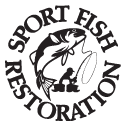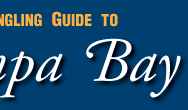CONTACT US:
Florida Fish and Wildlife
Conservation Commission
Fish and Wildlife
Conservation Commission
100 Eighth Avenue SE
St. Petersburg, Florida 33701
727-896-8626
|
|
|
Tampa Bay Estuary Program
100 Eighth Avenue SE
St. Petersburg, Florida 33701
727-893-2765
|
|
|

|
|
Funding for this project was obtained through Tampa Bay Estuary Program specialty license plate funds.
|

|
|
Additional funding for this project was obtained through the Federal Aid in Sport Fish Restoration Fund.
|
|
|
 |
In addition to being considered the fishing capital of the world, Florida can also boast that it is the boating capital of the United States. During the years 2007 and 2008, more than 900,000 pleasure boats were registered in Florida. During this same time, over 100,000 of those were registered in Hillsborough, Pinellas, and Manatee counties.
Boaters in Tampa Bay take advantage of the opportunities for spending time on bay waters. Many boaters flock to barrier islands to spend time playing on the beach and soaking up the sun. Others spend time stalking fish on the grass flats or participate in sailing regattas. Paddlers travel around the bay observing local wildlife.
This section of the Web site provides boaters information about safe boating, sharing the road with cargo and passenger ships, DEP-designated Clean Marinas, public access boat ramps, and managed and marked paddling trails.
Boating safety education requirements
Boat operators who were born on or after January 1, 1988 must have a Florida Boating Safety Education Identification Card in order to operate a motorboat with ten horsepower or more. The requirement to take an approved boating safety course and to obtain an FWC-issued identification card will not change, but the age threshold for the educational requirements will now be based on whether or not you were born on or after January 1, 1988.For more information about boating safety education requirements, visit FWC Boating Safety and Education.
|
Seagrass Scarring
More than 80 percent of all recreationally and commercially important fish species are dependent upon seagrass at some point in their lives. Seagrass improves water quality, traps sediment, provides shelter for many juvenile fish species, and provides a food source for other marine life. Avoid damaging seagrass by knowing your boat’s operating depth and navigating in marked channels. Anchor only in bare sandy bottoms. If you run aground in shallow water, stop and pole your boat into deeper water.
|

|
Destruction of seagrass in Aquatic Preserves is a violation of Florida Law and carries a penalty of up to $1,000.00.
|
For more information about boating and boating safety, please visit the following Web sites:
FWC, Office of Boating and Waterways
U. S. Coast Guard Auxiliary
|
If you have any questions, comments, or suggestions about this Web site, please e-mail us at Boating_Guides@MyFWC.com.
Would you like to receive notices of changes to this Web site and the Boating and Angling Guide to Tampa Bay? If so, please e-mail us and include SUBSCRIBE-TAMPA in the subject line.
|























